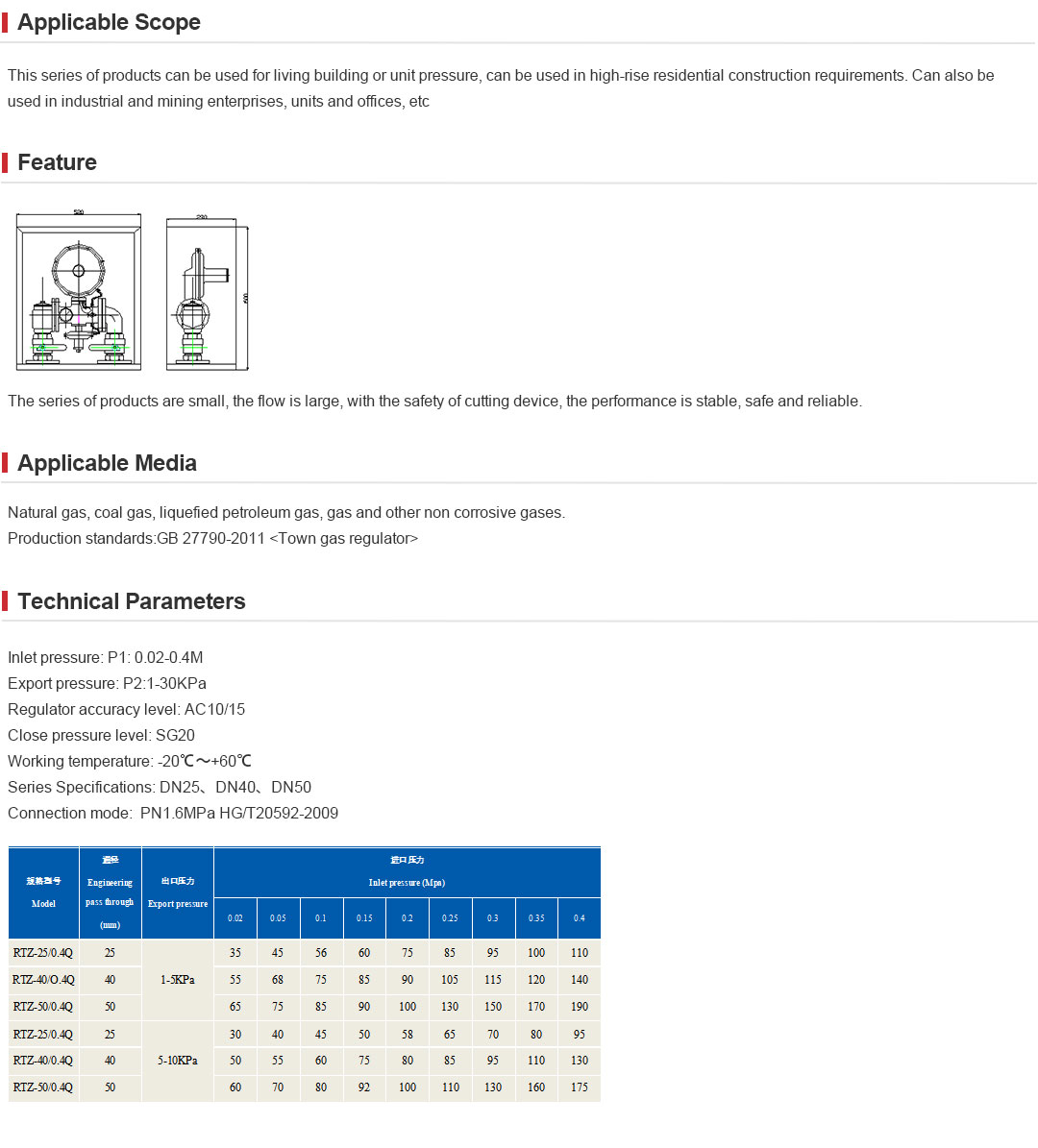
Nov . 18, 2024 08:26
Back to list
Design and Functionality of Pressure Regulation Devices in Industrial Applications
Understanding Pressure Regulating Devices Principles, Applications, and Importance
Introduction
Pressure regulating devices are essential components in various industrial applications, ensuring that gas or liquid pressures remain within safe and operational limits. These devices play a crucial role in maintaining system efficiency, protecting equipment, and enhancing safety. This article will delve into the principles of pressure regulation, discuss different types of pressure regulating devices, their applications, and their importance in modern industry.
Principles of Pressure Regulation
At its core, a pressure regulating device functions by maintaining a desired output pressure regardless of fluctuations in the input pressure or changes in flow demand. This is achieved through a feedback mechanism that adjusts the flow of the medium being controlled. The basic principle can be understood through the concept of force balance, where the adjusting force (typically a spring) counteracts the pressure force, allowing for precise control of the output pressure.
The key components of a typical pressure regulator include an inlet port, a spring mechanism, a diaphragm, and an outlet port. When the inlet pressure exceeds the setpoint, the diaphragm moves, compressing the spring and opening the outlet port to decrease the pressure. Conversely, when the outlet pressure drops below the desired setpoint, the spring expands, restricting the flow until balance is achieved.
Types of Pressure Regulating Devices
There are several types of pressure regulating devices, each designed for specific applications and conditions. The most common types include
1. Mechanical Regulators These are the most widely used pressure regulators. They employ mechanical components such as springs and diaphragms to modulate pressure. They are simple, cost-effective, and widely applicable in gas and liquid systems.
2. Electronic Pressure Regulators These utilize electronic sensors and controllers to provide precise pressure control. They are particularly advantageous in applications where high accuracy and responsiveness are critical, such as in laboratories and high-tech manufacturing.
3. Back Pressure Regulators These devices maintain a specific upstream pressure, allowing downstream processes to operate efficiently. They are commonly used in processes that require stable upstream conditions, such as in chemical processing.
4. Relief Valves While not pressure regulators in the strictest sense, relief valves are critical for safety. They automatically relieve pressure in a system when it exceeds predetermined levels, preventing equipment damage or catastrophic failure.
pressure regulating device

Applications of Pressure Regulating Devices
Pressure regulating devices find applications across a diverse range of industries, including
- Oil and Gas In this sector, pressure regulation is vital for safe transportation and storage of hydrocarbons. Regulators manage pressure in pipelines, ensuring safety and operational efficiency.
- Water and Wastewater Treatment Pressure regulators ensure that water flow is maintained at safe levels, preventing pipe bursts and inefficiencies in treatment processes.
- Manufacturing Automated systems in manufacturing environments often rely on precisely regulated pressure to maintain quality control. For example, pneumatic systems depend heavily on accurate pressure regulation for the consistent operation of machinery.
- Medical Applications In the healthcare sector, pressure regulating devices control the delivery of gases such as oxygen and nitrous oxide to patients, ensuring safety and efficacy during treatments.
Importance of Pressure Regulation
The significance of pressure regulating devices cannot be overstated. They enhance safety by preventing over-pressurization, which can lead to system failures or accidents. Additionally, they improve efficiency by ensuring that systems operate within optimal pressure ranges, minimizing energy consumption and reducing wear and tear on equipment.
Furthermore, in processes that require strict adherence to pressure specifications, such as chemical reactions or material transformations, pressure regulation becomes critical. Variations in pressure can alter reaction rates, product quality, and overall yield, making accurate regulation essential for success.
Conclusion
In conclusion, pressure regulating devices are integral to various industries and applications, playing a vital role in ensuring operational safety, system efficiency, and product quality. Understanding their principles and functions can help engineers and operators optimize processes and make informed decisions regarding system design and maintenance. As technology continues to evolve, the development of advanced pressure regulation solutions will undoubtedly enhance performance and safety across multiple sectors, highlighting the ongoing importance of these devices in modern industry.
Latest news
-
Safety Valve Spring-Loaded Design Overpressure ProtectionNewsJul.25,2025
-
Precision Voltage Regulator AC5 Accuracy Grade PerformanceNewsJul.25,2025
-
Natural Gas Pressure Regulating Skid Industrial Pipeline ApplicationsNewsJul.25,2025
-
Natural Gas Filter Stainless Steel Mesh Element DesignNewsJul.25,2025
-
Gas Pressure Regulator Valve Direct-Acting Spring-Loaded DesignNewsJul.25,2025
-
Decompression Equipment Multi-Stage Heat Exchange System DesignNewsJul.25,2025

